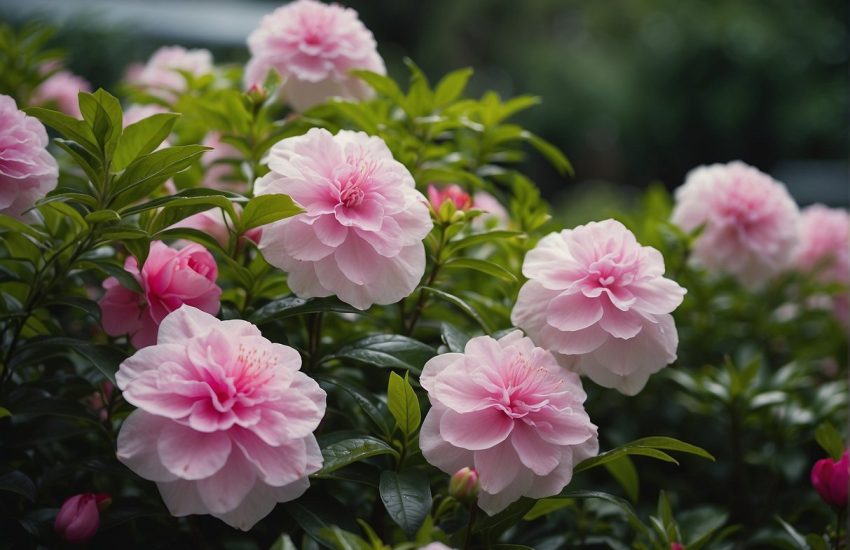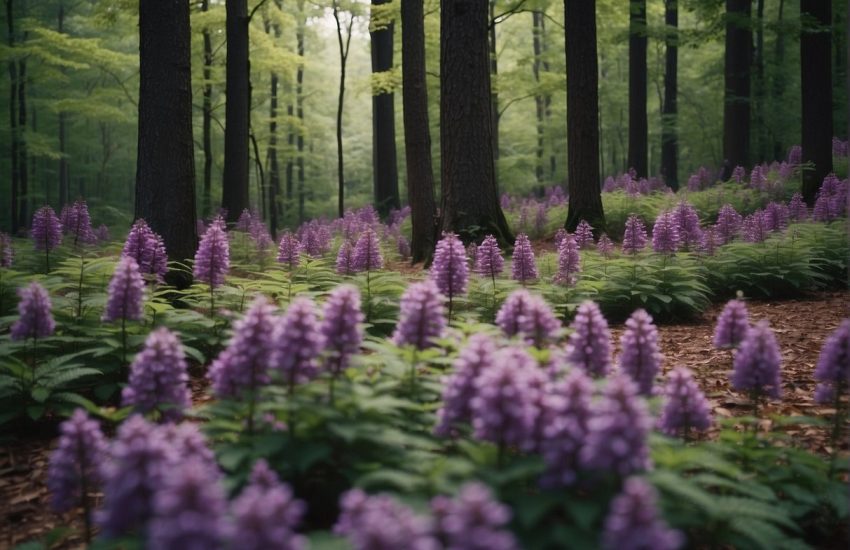Common Trees in Louisiana: A Guide to Native Species
Louisiana is home to a diverse array of trees, both native and introduced. The state’s warm and humid climate provides ideal growing conditions for many species, from towering pines to sprawling oaks. Understanding the common trees in Louisiana can help residents and visitors alike appreciate the natural beauty of the state and better identify the flora around them.

One of the most iconic trees in Louisiana is the bald cypress, which was designated the state tree in 1963. This deciduous conifer is known for its distinctive “knees,” or woody projections that rise out of the water in swampy areas. Bald cypress trees can live for hundreds of years and grow up to 120 feet tall. They are often found along bayous, rivers, and other bodies of water throughout the state.
Other common trees in Louisiana include the sweetgum, a hardwood tree with star-shaped leaves that turn vibrant shades of red, orange, and yellow in the fall. The southern magnolia, with its glossy evergreen leaves and fragrant white flowers, is another popular tree in the state. Louisiana is also home to a variety of oak trees, including the live oak, which is known for its sprawling branches and can be found throughout the state.
Identifying Common Louisiana Trees
Louisiana is home to a diverse range of tree species, both native and introduced. Identifying common trees in Louisiana can be an enjoyable and educational experience. Here are some tips on how to identify them.
Leaf Characteristics
The first step in identifying a tree is to look at its leaves. Leaves can be either simple or compound, and they can be arranged in an alternate or opposite pattern on the stem. The edges of the leaves can be smooth, serrated, or lobed. The surface of the leaves can be shiny or dull, and the texture can be smooth or hairy.
To help identify common trees in Louisiana, a leaf key guide is available from the LSU AgCenter. This guide uses pictures instead of long written descriptions to identify the leaves of common trees in Louisiana. The guide includes both native and introduced trees from other parts of the United States or from foreign countries.
Bark and Trunk Features
Another way to identify a tree is to look at its bark and trunk features. Bark can be smooth, scaly, or furrowed. The trunk can be straight or crooked, and it can have a single trunk or multiple trunks.
Tree Profiles and Pictures
In addition to leaf and bark characteristics, tree profiles and pictures can also be useful in identifying common trees in Louisiana. The bald cypress (Taxodium distichum) is a common tree in Louisiana that can be identified by its distinctive buttressed trunk and needle-like leaves. The live oak (Quercus virginiana) is another common tree in Louisiana that can be identified by its broad, spreading crown and evergreen leaves. The southern magnolia (Magnolia grandiflora) is also a common tree in Louisiana that can be identified by its large, fragrant flowers and glossy, dark green leaves. The redbud (Cercis canadensis) is a small tree with pink or purple flowers that bloom in early spring.
In conclusion, identifying common trees in Louisiana can be a fun and educational experience. By using a combination of leaf, bark, and tree profile characteristics, it is possible to identify many of the trees found in Louisiana. A leaf key guide and pictures can also be useful tools in identifying common trees in Louisiana.
Cultivation and Care of Louisiana Trees
Planting and Maintenance
When planting trees in Louisiana, it is important to select the right tree for the right place. Proper tree planting begins with good planning. Determine your planting goals, and match the mature size, light, soil and moisture requirements of your tree to the site. Refer to the Species Selection Chart and Tree Spacing Guide for guidance.
It is recommended to plant trees in Louisiana in late fall or early winter, when the soil is still warm enough to encourage root growth but the tree is dormant. Dig a hole two to three times the diameter of the root ball and no deeper than the root ball. Place the tree in the hole so that the top of the root ball is level with the soil surface. Fill the hole with soil, tamp it down, and water thoroughly.
After planting, trees should be watered regularly for the first two years. Water deeply and infrequently to encourage deep root growth. Mulching around the base of the tree can help conserve moisture and keep weeds at bay.
Soil and Weather Adaptations
Louisiana has a humid subtropical climate, with hot, humid summers and mild winters. Trees that are well-adapted to Louisiana’s climate include the water oak and the crape myrtle.
Louisiana has a variety of soil types, including sandy soils, clay soils, and loamy soils. Trees that are well-adapted to Louisiana’s soils include the bald cypress and the live oak.
Pests and Diseases
Trees in Louisiana are susceptible to a variety of pests and diseases, including cankers and chlorosis. Regular maintenance, including pruning and fertilization, can help prevent these problems. If a tree does become infested or diseased, it is important to identify the problem and take appropriate action.
Overall, proper planting, maintenance, and care can help ensure healthy and thriving trees in Louisiana.


